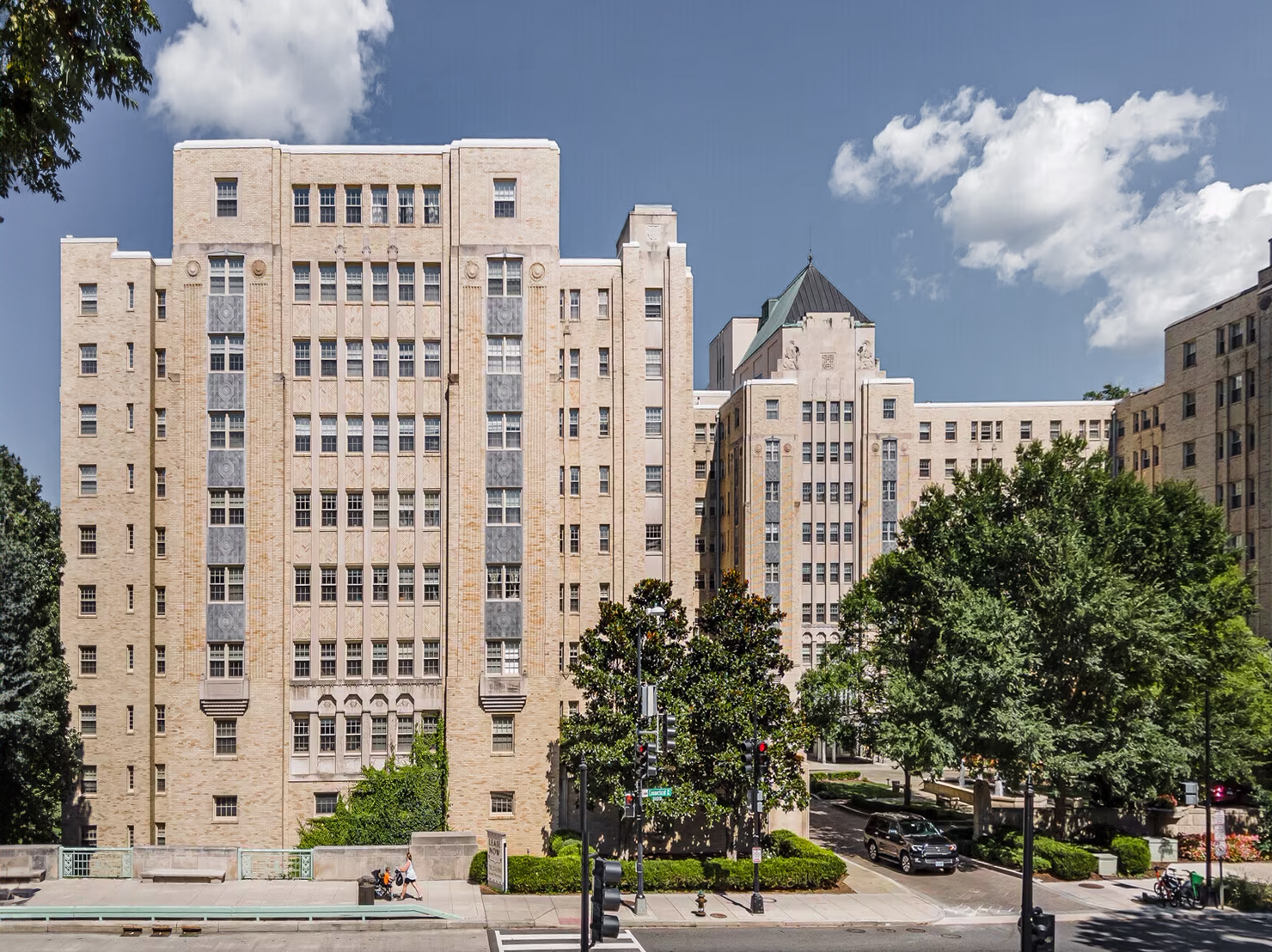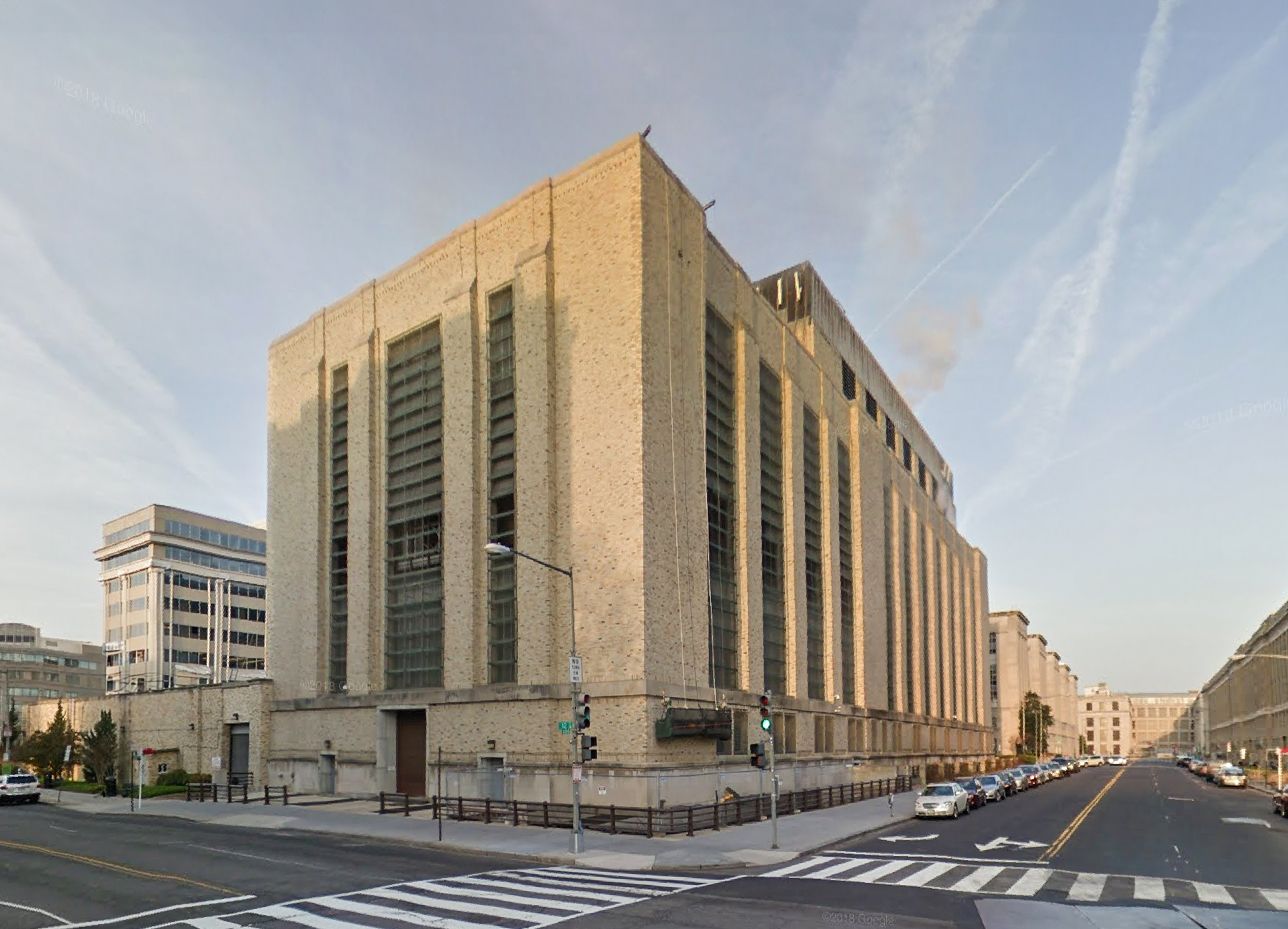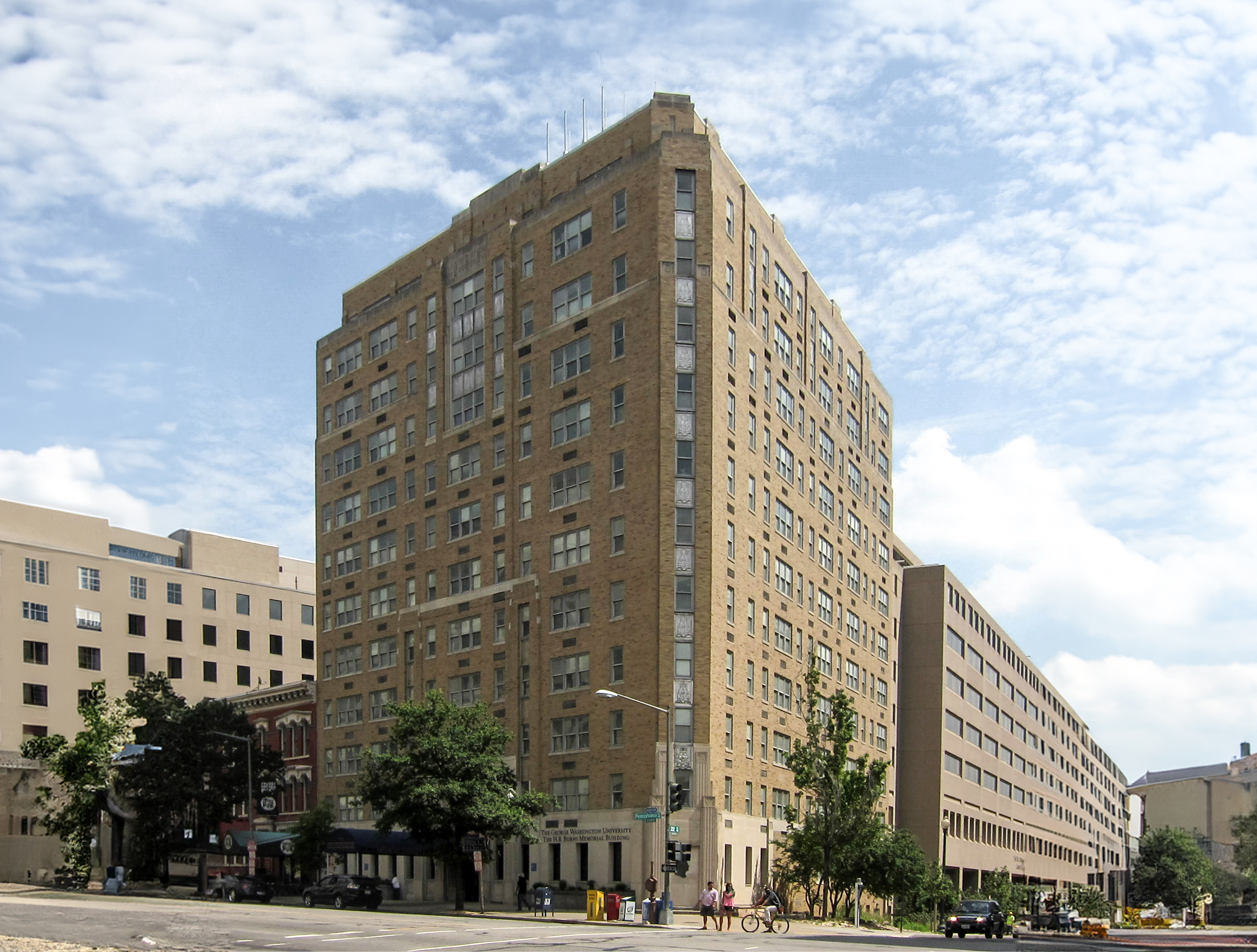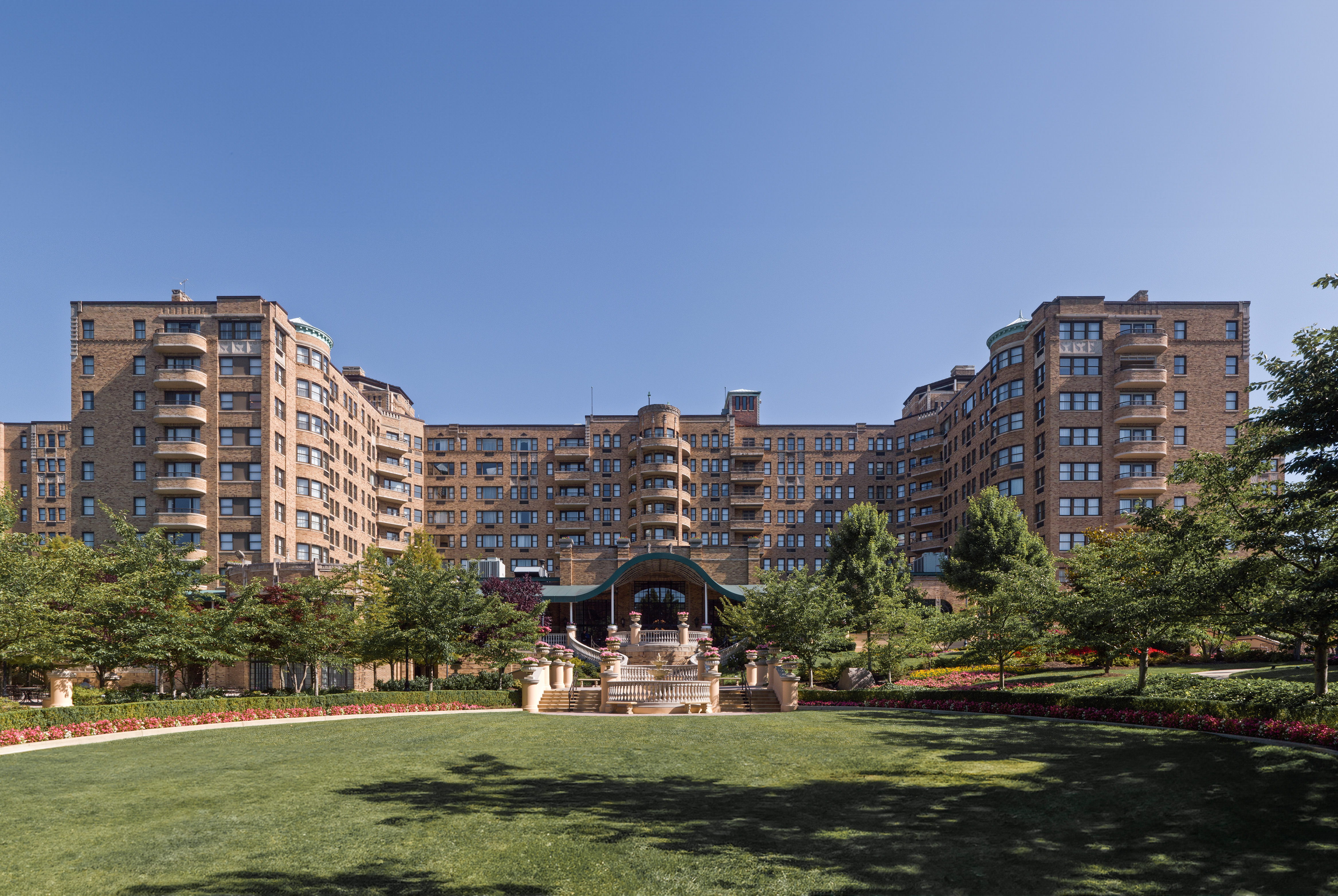The Kennedy–Warren Apartment Building is an Art-deco skyscraper designed by Joseph Younger, and built between 1930 and 1931 in Washington DC, DC.
Its precise street address is 3133 Connecticut Avenue, Washington Dc, DC. You can also find it on the map here.
The Kennedy–Warren Apartment Building is a structure of significant importance both for the city of Washington DC and the United States as a nation. The building embodies the distinctive characteristic features of the time in which it was built and the Art Deco style. Because of that, the Kennedy–Warren Apartment Building was officially declared as a national landmark in 1989, and was included in the National Register of Historic Places on July 27th 1994.
At the time of its completion in 1931 the Kennedy–Warren Apartment Building incorporated solutions that were quite advanced at the time, these included an air cooling system that used three large fans that sucked in fresh air at the back of the building and propelled it through the hallways.
The building has been restored 3 times over the years to ensure its conservation and adaptation to the pass of time. The main restoration works happened in 1935, 2004 and 2011.





